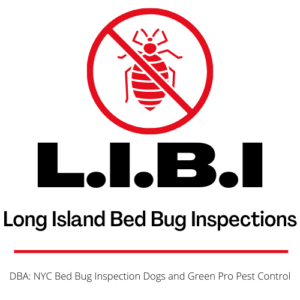Bed bugs have been enjoying a major resurgence over the last few decades. Indeed, since the 1990s reports of bed bug infestations have skyrocketed across the country and around the globe. New York City alone has seen a 2000% rise in bed bug activity over the last 15 years. That’s a staggering statistic, but it does sort of beg the question – “If bed bugs are so prominent and so active why don’t we so rarely see them?”
It’s a good question, and there’s no simple answer. For the most part, people don’t notice bed bug infestations until they’re in the thick of one. It’s only when we’re being bitten by these blood-sucking parasites that we really begin to sit up and take notice. And that’s indicative of one of the bed bugs’ greatest strengths. They know how to hide. They know how to conceal themselves until it’s time to strike, after which they scurry back to their hiding places leaving their hosts scratching their heads and their bites.
Bed Bugs are Notoriously Secretive Pests
Bed bugs are notoriously evasive creatures, and that’s a large part of what makes them such effective predators. More often than not people don’t realize that they’re sharing their environment with a colony of bed bugs until its too late. It’s only when the bites and rashes begin to appear that we start to notice the telltale signs of bed bug activity.
Once you start looking for signs of bed bug activity, however, you’ll find that there’s a lot of it about. You may begin to notice staining on bedsheets, traces of blood and feces left by the insect parasites as they make their way to and from their hosts. You might also start finding the discarded remnants of exoskeletons that are routinely shed as the bed bug passes through its natural stages of growth. You may even begin to notice the sweet musky scent that often accompanies a fully-fledged bed bug invasion.
The Bedroom – A Bed Bugs Favorite Hiding Place
One of the most common areas of the home to find bed bugs is, unfortunately, the bedroom. It is where we are all most vulnerable and it is where bed bugs have easy access to us. We all spend roughly 1/3 of our lives sleeping, and that gives bed bugs ample opportunity to feed.
While bed bugs will most often be found on or around mattresses and bed linen there are many other places in the bedroom where they might choose to hide. When hunting down a colony of bed bugs you need to look in all possible hiding places, including pillows, mattress, bedspring, and headboard. You should also carefully inspect comforters and bed linen for any signs of bed bug activity.
When hunting for signs of bed bug activity it is important to venture beyond the bed. There are other areas of the bedroom that need careful inspection, including:
- Baseboards
- Wall joints
- Electrical outlets
- Switchplates
- Dressers
- Chairs and other furnishings (including cushions and fabric covering)
- Window blinds
- Curtains
- Closets
These areas will demand careful inspection, and it will be helpful if you have the right tools with you. It will be helpful if you have a flashlight and a magnifying glass to aid in your search. Also, remember that you will need to empty out dressers and drawers and thoroughly search around and behind furnishings and belongings to ensure that you have inspected all areas of the room as thoroughly as possible.
Other Hiding Places Throughout the Home
Bed bugs won’t confine themselves to the bedroom; however, regardless of how conducive it is to their feeding habits. Your bed bug hunt should extend throughout the house, taking in all high traffic areas. Remember, you and your family are the bed bugs’ prey so they will primarily be drawn to the areas of the home you and your family occupy the most.
Some key areas to investigate include:
- Couches
- Upholstered chairs
- Recliners
- Furniture in rooms where people sit for extended periods
- Rugs
- Carpets
- Closets
- Pet beds
- Cupboards
The ideal hiding space of a bed bug is one where the insect can remain concealed and undisturbed until it is time for them to feed. Use your imagination and look for any areas in the home that might be used as hiding places for hungry bed bugs.
What to Do if Your Search is Successful
If your search turns up any signs of bed bug activity it is important that you act quickly. Even if your family has yet to be troubled by bed bug bites there is no time to delay. Contact a professional bed bug inspection and removal service and arrange for an inspection. Working together you can lay out a plan of attack and work toward eliminating any and all bed bugs from your family’s home. Remember, the sooner you act the sooner you can sleep soundly once again.
Published by Scott Palatnik
If you believe you’ve brought bed bugs into your home or office, give us a call, we can help!
Now with 2 locations. On Long Island @ 516-619-6149, or in NYC @ 212-299-9186
We are Long Island Bedbug Inspections.
Your Bedbug Inspection, and Elimination solution.


